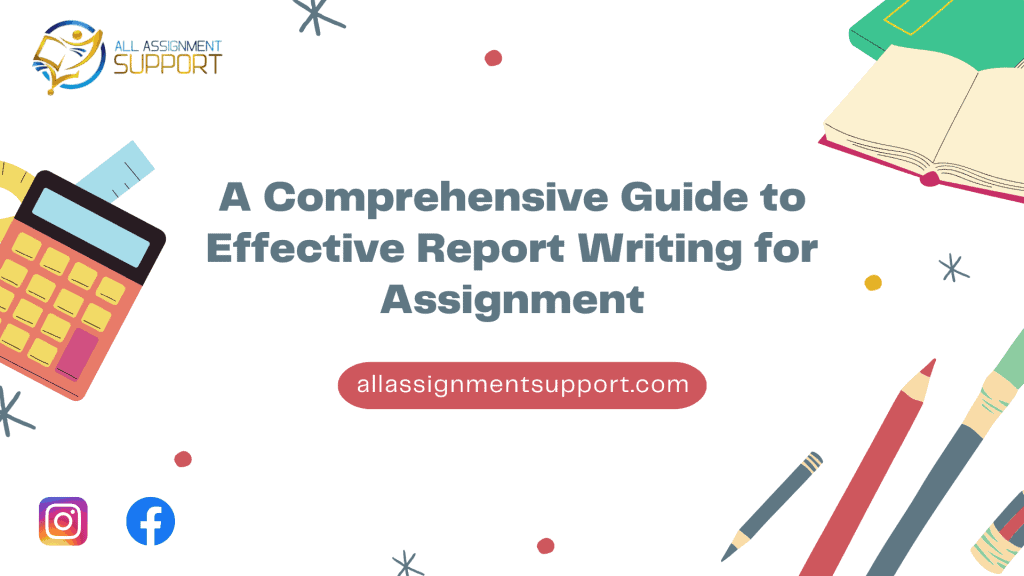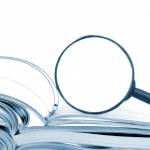Introduction
In both academic and professional spheres, mastering the skill of compiling clear and organized information is essential. Whether you’re a student tackling a report assignment or a professional addressing a work task, understanding how to write a report is fundamental.
This article is a practical guide to help you navigate the process of creating effective reports. We’ll break down the “how to write a report” challenge into manageable steps, equipping you with the know-how to excel in your report assignments.
How to Write a Report for an Assignment
Report assignment is a key skill that combines both clarity and knowledge sharing. When you’re tasked with an assignment that requires a report, you’re essentially being allowed to present your understanding in a structured way. A strong report reflects your grasp of the topic and showcases your ability to explain intricate ideas clearly. This guide aims to simplify creating such reports by providing essential steps and practical strategies. So, let’s begin unraveling the art of writing on how to write a report.
Step 1: Preparing for Report Writing
Writing report assignments requires meticulous preparation, setting the stage for a compelling and coherent document. You can seamlessly initiate your report-writing endeavor by adhering to these fundamental steps.
How to start a report:
- Read the assignment instructions carefully. Ensure you understand the report’s purpose, the audience, and the length requirements. You develop the scientific skill of how to write a report in a cohesive manner.
- Choose a topic that is relevant to the assignment and that interests you. The topic should be specific enough to be manageable but broad enough for in-depth research.
- Do some preliminary research to gather background information on the topic. This will help you develop your report’s thesis statement or statement of purpose.
- Write an introduction that captures the reader’s attention and provides an overview of the report. The introduction should include the following:
- The topic of the report
- The purpose of the report
- The main points that will be covered in the report
See Also: Medical Research Topics
How to write a report
- Organize your thoughts and research. Create an outline or mind map to help you structure your report.
- Write clear and concise sentences. Avoid jargon and acronyms.
- Use evidence to support your claims. Cite your sources properly.
- Proofread your work carefully. Make sure there are no errors in grammar or spelling.
Here is a sample report outline that you can use:
- Introduction
- Background information
- Thesis statement or statement of purpose
- Body
- The main points of the report
- Evidence to support each point
- Conclusion
- Summary of the main points
- Recommendations or implications
Step 2: Planning and Structuring Your Report
Once you know how to start a report, the next step involves meticulous planning and structuring. Adhering to these critical aspects ensures that your report unfolds coherently and engagingly, effectively conveying your insights.
Understanding the Essential Components: The Building Blocks of a Report
A well-structured report comprises several key components that collectively convey a comprehensive understanding of your topic:
- Title: The title succinctly encapsulates the essence of your report, giving readers an initial glimpse into its focus.
- Abstract: This summary provides an overview of your report’s objectives, methods, findings, and conclusions. It serves as a teaser, enabling readers to quickly grasp the report’s essence.
- Introduction: The introduction introduces your topic, explains its significance, and outlines the objectives. It’s like opening the door to your report, inviting readers to delve further.
- Methodology: This section details your methods and approaches to gather and analyze data. It’s like revealing the tools you used for your journey.
- Findings: Present your observations and results here. Share your discoveries and data in a clear and organized manner.
- Discussion: Analyze and interpret your findings in the context of your objectives. It’s like discussing the landscapes you explored on your journey.
- Conclusion: Sum up your report by restating the main points and explaining their significance. Provide closure and leave readers with a clear understanding of your insights.
- References: Acknowledge the sources you consulted for your report. It’s like giving credit to fellow explorers who guided your journey.
Creating an Outline
Before you dive into writing, create an outline that arranges your ideas logically. Think of it as a map that guides you through your report. Each section should flow seamlessly into the next, ensuring a coherent narrative.
Determining Length and Depth
Decide on the appropriate length for each section. Just like packing for a journey, ensure each part contains enough information without overwhelming the reader. Strike a balance between providing sufficient depth and keeping the report concise.
Crafting Your Structured Report
As you set out to create your report, remember that a well-structured document ensures clarity and ease of understanding. With a solid plan, you can confidently articulate your insights, making your report an informative and captivating journey for your readers.
Step 3: Research and Data Collection
As you navigate through your report assignment, the phase of research and data collection emerges as a vital expedition. By mastering these techniques, you can infuse your report with well-informed insights and credible information.
Employing Effective Information-Gathering Methods
To gather information effectively, consider an array of methods that match your report’s needs:
- Books and Scholarly Articles: These sources offer in-depth knowledge and well-researched perspectives, like guidebooks for your journey.
- Online Resources: Websites, databases, and online journals provide quick access to a wide range of information. They are like digital compasses, guiding your exploration.
- Surveys and Interviews: If applicable, conduct surveys or interviews to collect firsthand data and opinions. These are like interactive discussions on your journey.
- Observation and Experiments: For scientific reports, direct observation or experiments can yield valuable data, akin to exploratory adventures.
Assessing Source Credibility and Relevance
Just as you’d verify the reliability of a travel guide, evaluate the credibility and relevance of your sources. Ask:
- Is the author an expert in the field?
- Is the source published by a reputable organization?
- Does the information align with other reliable sources?
Taking Methodical Notes
Organize your research by taking structured notes. Jot down key points, quotes, and references. This is like creating a journal to document your findings along the journey.
Crafting Your Research and Data Collection
Approach research and data collection with the same diligence you’d apply to planning an expedition. Every source you use will help you understand something better. By carefully evaluating credibility, applying a variety of techniques, and documenting your findings, you can make sure that the report’s foundation is strong, thoroughly researched, and capable of readers’ comprehension.
Step 4: Writing a Report
As you navigate further into your report assignment, writing becomes paramount. By skillfully presenting your findings, you can construct a report that captivates and enlightens your audience. So now look at the question, “How do you write a report?”
Engaging Introduction
Commence your report with an engaging introduction akin to the opening chapter of an intriguing book. Captivate your readers by providing context and elucidating the importance of your chosen topic. This introduction serves as a waypoint, guiding your readers on the journey you are about to take them on.
Defining Purpose, Objectives, and Scope
Clearly outline the purpose, objectives, and scope of your report. Think of this step as sketching the map of your voyage. Enlighten your readers about your intentions and what you aim to achieve with your exploration.
Explaining Your Methodology
Elaborate on the methodology employed to gather data and conduct your research. This is akin to revealing the tools and techniques you’ve packed for your journey. Explain how you gathered information, conducted surveys, conducted interviews, or performed experiments, and explain why you chose these methods.
Step 5: Creating a Strong Discussion and Conclusion
The discussion and conclusion sections of your report are where you bring your findings to life by providing context, analysis, and insights that help your readers understand the significance of your work. Let’s delve into each aspect in more detail:
Discussing the Implications of Your Findings and Their Significance
You should articulate the broader implications of your findings. Consider the following questions as you craft this part of your report:
- How do your findings contribute to the existing body of knowledge in the field?
- What practical applications can be derived from your results?
- How might your findings influence decision-making, policies, or practices in relevant industries or domains?
- Are there any societal, economic, or environmental implications to consider?
By addressing these questions, you highlight the real-world relevance of your research. For instance, if you conducted a study on the impact of a specific teaching method on student performance, you might discuss how your findings could guide educational strategies and improve learning outcomes.
Connecting Your Findings to Existing Theories or Literature
This is where you position your work within the existing academic landscape. Consider how your findings align with or diverge from established theories or previous research. Reference relevant studies, experiments, or concepts that support or contrast with your results.
For instance, if your research investigated the effects of climate change on a specific ecosystem, you could discuss how your findings corroborate or challenge existing models of ecological impact. This demonstrates your engagement with the scholarly discourse and your ability to contribute to ongoing academic conversations.
Step 6: Editing and Proofreading
Editing and proofreading are the meticulous stages where your report transforms from a draft into a polished work. These phases involve fine-tuning your content, addressing language errors, and ensuring consistent formatting. Here’s a closer look at how to enhance your report through careful editing and proofreading:
Reviewing for Clarity, Coherence, and Consistency
Maintaining clarity, coherence, and consistency is crucial for effective communication. To achieve this:
- Paragraph Flow and Structure: Ensure that each paragraph transitions smoothly to the next, maintaining a logical flow of ideas. Each paragraph should focus on a single point or theme to avoid confusion.
- Headings and Subheadings: Verify that your headings and subheadings accurately reflect the content of each section. Consistent formatting of headings aids in guiding readers through your report.
- Language and Terminology: Strive for precise language that conveys your ideas. Avoid overly complex terms or jargon that might alienate readers who are less familiar with the subject matter.
- Explanation of Concepts: Remember that your readers may have varying levels of familiarity with your topic. Make sure to provide sufficient explanations for any specialized terms or concepts.
Checking for Grammatical, Spelling, and Punctuation Errors
Typos and grammatical errors can undermine your report’s credibility. Here are specific examples of common errors to watch out for:
- Subject-Verb Agreement: Incorrect: “The data are collected”. Correct: “The data is collected”.
- Run-On Sentences: “The experiment was successful; we gathered valuable data”.
- Comma Splices: “The results are intriguing; they challenge existing theories”.
- Misplaced Apostrophes: “The student’s goals are clear”.
Efficient Proofreading Strategies
To catch errors more effectively, employ proofreading strategies such as:
- Reading Backward: Start at the end of your report and read each sentence backward. This disrupts the natural flow, helping you focus on individual words rather than the content’s coherence.
- Changing Mediums: Print or read your report on a different device. A format change can help you spot errors you might have overlooked on-screen.
- Taking Breaks: Don’t proofread all in one go. Taking breaks between editing sessions allows you to approach your work with fresh eyes, increasing the chances of catching mistakes.
Importance of Consistent Formatting
Consistency in formatting enhances the professional appearance of your report. Ensure uniformity in:
- Font Styles and Sizes: Maintain a consistent font style and size throughout your report, including headings, subheadings, and body text.
- Heading Formatting: Use a consistent hierarchy of headings and subheadings. For instance, if you use bold and italics for main headings, maintain this formatting consistently.
- Tables, Figures, and Captions: Ensure that tables, figures, and captions follow the same formatting guidelines. Captions should be consistently placed above or below the corresponding table or figure.
Formatting Citations and References
Incorporate citations and references according to your chosen citation style (APA, MLA, or Chicago):
- In-Text Citations: Check that in-text citations follow the correct format. For example, in APA style, they should include the author’s last name and the publication year (Smith, 2022).
- Reference List: Verify that your reference list includes all the sources cited in your report, formatted accurately according to the chosen style.
Step 7: Citations and References
Citations and references are the foundation of academic integrity and the backbone of credible research. Properly citing your sources prevents plagiarism and allows readers to trace the origins of your information and verify your claims. Here’s an in-depth exploration of the key aspects related to citations and references:
Understanding the Importance of Proper Citation to Avoid Plagiarism
Plagiarism is a serious academic offense that can have severe consequences. It involves presenting someone else’s ideas, words, or work as your own without giving them proper credit. Citing sources serves several crucial purposes:
- Giving Credit: Proper citation acknowledges the intellectual contributions of others and demonstrates respect for their work.
- Supporting Your Claims: Citations lend credibility to your arguments by showing that you’ve consulted reputable sources.
- Avoiding Misrepresentation: Accurate citation ensures you accurately represent the ideas and findings of others, preventing misinterpretation.
- Building Scholarly Conversations: You engage in ongoing academic discussions and contribute to the scholarly community by citing previous research.
Following the Guidelines of the Chosen Citation Style Consistently
Different disciplines and institutions prefer specific citation styles, such as APA (American Psychological Association), MLA (Modern Language Association), or Chicago. Consistency within a chosen style is essential:
- In-Text Citations: Follow the correct format for in-text citations, including the author’s name, publication year, and page number, if applicable.
- Reference List or Bibliography: Compile a comprehensive list of all your cited sources. Organize them alphabetically according to the author’s last name (or title if no author is available).
- Formatting Details: Pay attention to formatting details such as italics, capitalization, punctuation, and indentation. These seemingly minor details contribute to the overall professionalism of your report.
Compiling a List of References Used in the Report
Creating a well-structured reference list is a critical part of your report. Here’s how to do it:
- Book References: Format citations with the author’s last name, initials, publication year, title (in italics or underlined), and publisher.
- Journal Article References: Include the author’s last name, initials, publication year, article title, journal title (in italics), volume number, issue number (in parentheses), page range, and DOI if available.
- Online Resources: Include the author’s name, publication year, title, website name, URL, and access date. Be sure to verify the reliability of online sources before citing them.
Step 8: Review and Revision
Reviewing and revising your report is the final stage of crafting a polished and impactful document. This step involves carefully evaluating your work, making necessary improvements to content and structure, and seeking external feedback to ensure your report is of the highest quality.
Taking a Break Before the Final Review to Gain a Fresh Perspective
After spending considerable time writing and editing, taking a break before your final review can be incredibly beneficial. This break allows you to distance yourself from the report, giving your mind time to reset. When you return to your work with fresh eyes, you’re more likely to notice areas that need improvement, errors you might have missed, or opportunities to enhance clarity.
Revisiting Your Report for Further Refinement in Terms of Content and Structure
During this phase, carefully re-read your report, focusing on content and structure. Consider the following:
- Content: Are all the sections well-developed and aligned with the report’s objectives? Are there any points that need further explanation or examples?
- Flow and Logic: Examine the flow of ideas from one section to another. Do your paragraphs and sections logically build on each other? Are there any gaps in your argumentation?
- Conciseness: Can you express any points more succinctly without losing clarity? Eliminate redundant information and unnecessary repetition.
Seeking Feedback from Peers, Mentors, or Instructors
External feedback is invaluable for identifying areas of improvement that you might not have noticed on your own. Reach out to peers, mentors, or instructors and ask for constructive feedback on your report. They can provide insights into clarity, coherence, and overall effectiveness.
When seeking feedback
- Be Open to Critique: Embrace feedback as an opportunity to enhance
Conclusion
You have started a journey in how to do a report assignment from start to finish.
As you write your report’s conclusion, it is crucial to consider the key insights and lessons that the report-writing process has to offer.
As you finalize your report, remember these pointers you must remember:
- Seek Learning Opportunities
Attend workshops, webinars, and courses that delve into the nuances of effective report writing.
- Explore Diverse Formats
Experiment with different types of report assignments, such as research reports, analytical reports, or case study reports, to expand your writing versatility.
- Read Widely
Engage with a variety of reports and academic papers to observe different writing styles, strategies, and presentation methods.
In a nutshell, the nuances of how you write a report is a dynamic process that challenges and empowers you to convey information with precision, credibility, and impact. Every report you write is not just an assignment; it’s a journey of growth and an investment in your own development as a proficient and articulate communicator.
Frequently Asked Questions (FAQs)
1. How do I handle appendices in a report?
Appendices are supplementary materials that provide additional information without cluttering the main text. Include them at the end of your report, numbered and labeled (e.g., Appendix A, Appendix B). Each appendix should be referred to in the main text (e.g., “See Appendix A for survey questions”).
2. What’s the difference between a bibliography and a reference list?
A bibliography includes all sources you consulted during your research, even if they are not directly cited in the report. A reference list, on the other hand, includes only the sources you cited in your report.
3. How do I cite sources from social media or online platforms?
Citing social media sources requires including the author’s name, username, publication date, and the full URL of the post. Be sure to follow the citation style guidelines for electronic sources.
4. What’s the best way to incorporate visuals like charts and graphs?
Visuals like charts and graphs are great for presenting data. Make sure they are clear, labeled, and directly related to the content. Include a caption that explains the visual’s significance, and refer to it in the text.
5. Is it necessary to include an abstract for every report?
Abstracts provide a concise summary of your report’s key points. While they are common in academic and scientific reports, their inclusion might vary depending on the assignment guidelines or purpose of the report.
6. How do I handle acronyms and abbreviations in a report?
When using an acronym or abbreviation for the first time, spell out the full term, followed by the acronym in parentheses. Thereafter, you can use the acronym or abbreviation alone.










